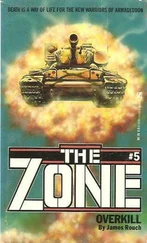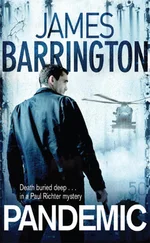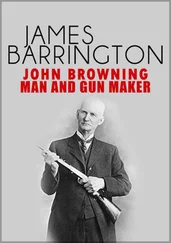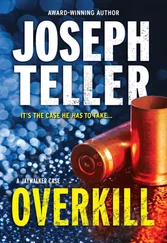Gibraltar Harbour
‘Go,’ Ross said into his helmet microphone, and the SAS troopers behind Richter began to move forward, Ross in the lead, Dekker a few yards behind him. Even with no apparent opposition, they still moved in combat fashion, one group stationary, weapons at the ready, while another group moved. One trooper slid down beside Richter and covered the ship with his 7.62mm Accuracy International PM sniper rifle fitted with a Davin Optical Starlight scope.
The first group had boarded the ship and was regrouping on deck when it all started to go wrong. Richter heard a muffled noise from somewhere near the bow, and then the distinctive metallic crack of a Kalashnikov AK47 assault rifle firing single shots. Two SAS men fell immediately, and the others dropped, rolling into what cover they could find while they searched for the gunman. The trooper beside Richter found him immediately. His rifle fired once and the Kalashnikov fell silent, but by then the advantage of surprise had gone, and lights were coming on all over the accommodation section at the stern of the freighter.
On deck, Ross was deploying his men ready for the firefight to come. The accommodation section was accessed by a door on the centreline of the ship, and Richter knew there was at least one other door on the starboard side because he could see it. He guessed that the starboard door was mirrored by one on the port side, which meant the SAS had three entrances to cover. The plan they had hoped to implement was for a stealthy entrance to the accommodation section and, as far as possible, silent elimination of the opposition, cabin by cabin. But that was before the man with the Kalashnikov alarm clock woke everyone up.
Ross had briefed two contingency plans. The first had assumed that the assault team would be detected after boarding the ship, and the second that they would be spotted on approach to the vessel. As Richter watched, the troopers swarmed silently around the accommodation section, smoothly implementing the former. Brief commands and acknowledgements sounded in his earphones.
From behind his crate Richter had a good view of the centreline door. Two troopers stood by it, and even at a distance Richter could see the characteristic stubby shape of the Arwen carried by one of them. The second man was working on the door, on the hinge side, moulding plastic explosive and implanting detonators. As Richter watched, the troopers moved away from the doors, into shelter, and seconds later three explosions ripped through the night. Ross’s contingency plan had called for simultaneous assaults on all possible entrances, and it sounded as if that had worked.
Through the smoke and debris Richter saw that the centreline door had gone, replaced by a gaping black oblong. The troopers ran back to their previous position, and one lobbed something through the doorway. The flat crack of the stun grenade sounded louder than the plastic explosive, magnified by the steel bulkheads of the accommodation section. The whitish fumes of CS gas poured out of the doorway, and when Richter could finally see clearly again, both the troopers had gone.
The SAS man beside him was quartering the ship with his Starlight scope, looking for signs that any Spetsnaz personnel had already got out of the accommodation area. Richter spotted another crate about twenty-five yards from the gangway, grabbed his bag and machinegun and sprinted for it.
The deck area appeared quiet, two troopers covering a third as he worked on the two SAS men who had fallen when the AK47 had opened up – all SAS personnel receive comprehensive medical training – but the accommodation section of the Anton Kirov was echoing with shots. Richter looked up at the bridge area, then further astern, and knew it was time for him to move.
‘This is Beatty,’ he said into the microphone. ‘I’m coming aboard.’ As Richter stood up he saw a brief flash from the bridge wing, and dropped flat behind the crate. Half a second later a bullet whistled through the thin wood beside him and ricocheted off the concrete of the Mole and away into the night. One of the SAS troops fired his sniper rifle. Richter cautiously eased his head out from behind the crate and looked up. Another flash, and two more shots from the Mole. Richter saw a dark figure tumble backwards and slump against the bridge wing door.
‘Thanks,’ he muttered, left the nav-bag where it was, moved the Hockler into the firing position, stood up and ran. He reached the gangway and ducked down beside it. No shots. He stood again, sprinted up the gangway and crouched down against the steel side of the accommodation section. One of the troopers on deck raised an arm in acknowledgement.
‘Beatty. I’m going up to the bridge.’ A steel ladder ran down the side of the section, and Richter ran over to it. He looked up, but could see no signs of opposition. One SAS trooper moved to the side of the ship to provide covering fire if needed, and Richter started to climb. The ladder was in three sections, joined by intermediate platforms of perforated steel, and he made the first without problems. Richter waited briefly on the platform, checking above and below, before he started up the stairs again.
Halfway up, a shape moved above him, and Richter span round, landed on his back on the stairway and jammed his feet out sideways to stop sliding down. He saw the movement again, and opened up with the Hockler on automatic at the same instant as one of the snipers on the Mole fired his sniper rifle. The figure above Richter slumped down, his Kalashnikov tumbling from his grasp and falling past Richter to the deck below.
He got to his feet again and continued up. The Spetsnaz soldier was lying facedown on the second platform, the back of his seaman’s jersey soaked with blood. It looked as if he had taken five or six bullets through the chest. Richter felt briefly for a pulse in his neck, found none, and started up the third flight.
The last set of stairs ended on the bridge wing, where another figure was slumped. As Richter stepped on to the wing he thought he saw the figure move. He dropped, just as he had been taught at Hereford, and fired a double-tap – two rounds – with the Heckler & Koch. Richter got to his feet, walked over to him, checked for a pulse and moved on. The bridge door was unlocked. Richter opened it and slid inside. There were no lights on, but he had a good idea where he was going. At the centre rear of the bridge was a sliding door, closed.
Richter checked that the Hockler was selected to single shot and that he had about half a magazine left, and slowly slid the door open, admitting the light from the passageway. Richter saw him before he saw Richter, but it didn’t matter because the Russian fired first. The Kalashnikov round ripped through the wooden door and took Richter full in the chest. It felt like a kick from a bull, and he tumbled backwards into the darkness of the bridge, the sub-machinegun spinning from his hands.
The Walnut Room, the Kremlin, Krasnaya ploshchad, Moscow
There was a brief knock at the door and then Yuri Baratov walked in. ‘We haven’t found Trushenko,’ Baratov said as the Russian President looked at him enquiringly, ‘but we think we know where he is. When we went to his apartment, his manservant said he was in St Petersburg, and when we finally found his secretary at the Ministry he confirmed it. He’s spending a few days with friends in St Petersburg. We got the address from the Ministry, and I’ve alerted the local SVR headquarters. They’re on their way to pick him up now.’
Anatoli Lomonosov snorted. ‘They can only arrest him if they can find him,’ he said sardonically. ‘It is, I suppose, just a coincidence that the Finnish border is only a hundred miles from St Petersburg. Your SVR men may find that the bird has already flown.’
Читать дальше












